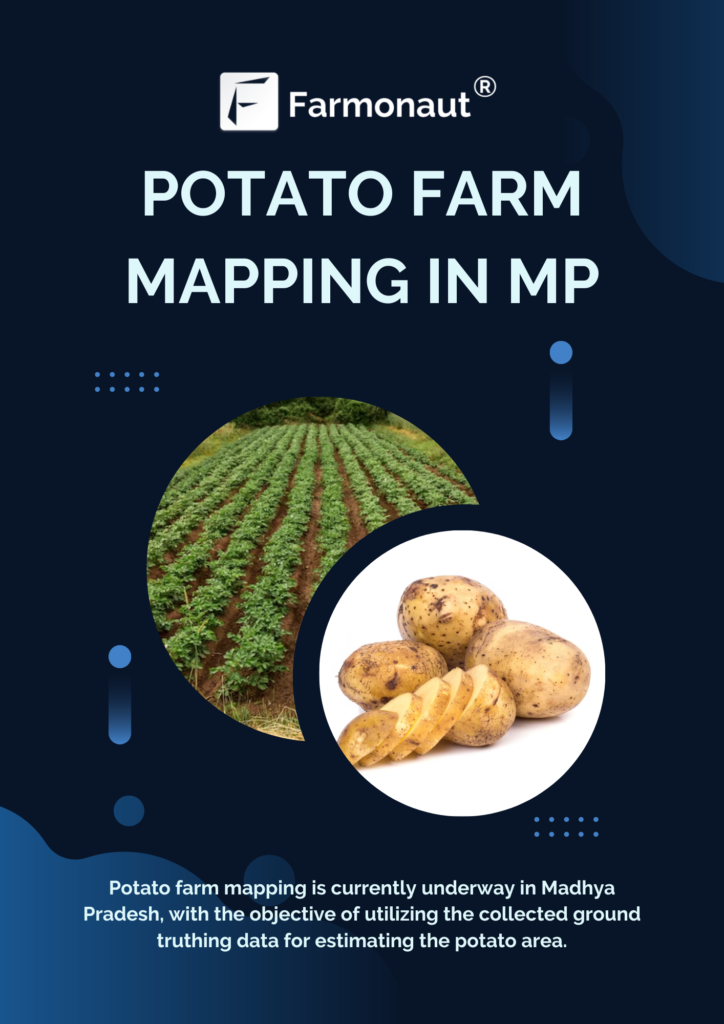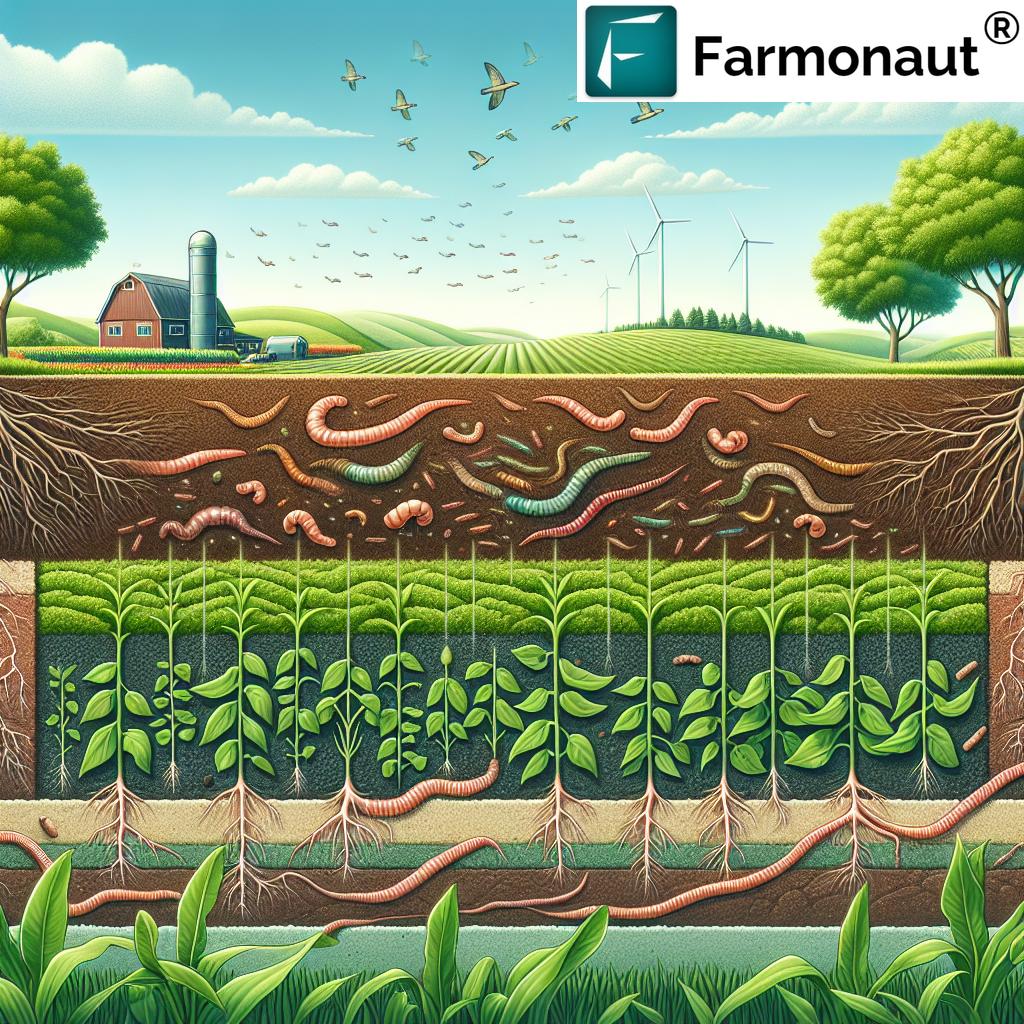Crop Insurance Coverage: 7 Tricks Farmers Swear By
Table of Contents
- Introduction: Understanding Crop Insurance Coverage in Agriculture
- Trivia: The Impact of Federal Crop Insurance
- Crop Insurance Basics: Why Coverage Matters
- Types of Crop Insurance Policies & Federal Programs
- 7 Tricks Farmers Swear By For Optimal Crop Insurance Coverage
- Comparative Coverage Options Table
- Farmonaut: Advanced Tools For Farm Risk Management
- Specialized Insurance Programs & Niche Coverage
- Challenges & Considerations in Crop Insurance
- Trivia: Risk Management Reduces Yield Losses
- Frequently Asked Questions about Crop Insurance Coverage
- Conclusion
Introduction: Understanding Crop Insurance Coverage in Agriculture
As our climate grows increasingly unpredictable, crop insurance coverage has become one of the most vital tools in the modern farmer’s risk management toolbox. But why is it so indispensable? Every year, adverse weather, disease, pests, and fluctuating prices threaten our farms’ yields and revenue. By leveraging the right insurance and federal programs, we can mitigate losses, protect our livelihood, and ensure stable agricultural production for our communities.
In this comprehensive guide, we will explore why crop insurance for farmers is essential, dissect the diverse types of coverage available—such as multi-peril crop insurance (MPCI), revenue protection insurance, catastrophic crop insurance (CAT), and specialized risk offerings for specialty crops—and, most importantly, we’ll uncover the seven most effective tricks experienced producers use to maximize the benefits of these programs.
Crop Insurance Basics: Why Coverage Matters
We all know that no matter how skilled or prepared we are as producers, some challenges are simply beyond our control. Drought, excessive moisture, hail storms, sudden frost, and disease outbreaks can devastate crops in a single season. Even market price swings can erode hard-won farming revenue.
Crop insurance coverage stands as an essential hedge—minimizing financial losses and ensuring that, even if disaster strikes, our agricultural operations can continue. Participating in these programs not only shields individual farms from bankruptcy, but also steadies our national food supply and rural economies.
What is Crop Insurance?
In the United States, crop insurance is primarily provided through the Federal Crop Insurance Program (FCIP), which is overseen by the U.S. Department of Agriculture’s Risk Management Agency (RMA). The FCIP offers a range of insurance options designed to cover different types of crops, weather perils, and producers—from large-scale grain farms to specialty crop growers.
Key Benefits of Crop Insurance Coverage
- Financial Risk Management: Protects against major perils—natural disasters (flood, frost, drought), pest infestation, and commodity price drops.
- Stable Revenue: Ensures financial continuity even in poor harvest years.
- Loan Eligibility: Facilitates access to crop loans and insurance based on verified potential yields and stability (see Farmonaut’s Crop Loan & Insurance Solutions).
- Protection for All Producers: Customizable policies that suit large grain farms, smallholders, and specialty growers alike.
Types of Crop Insurance Policies & Federal Programs
Let’s break down the most common types of crop insurance and federal programs available to U.S. farmers and compare their core features:
- Multi-Peril Crop Insurance (MPCI): Provides comprehensive protection against a wide array of risks: drought, moisture, hail, wind, insects, and diseases. MPCI allows us to insure a percentage of our historical crop production.
- Actual Production History (APH): Covers yield losses due to natural causes. With APH, we select coverage amounts (typically 50-75% of our average yield) and price percentages (55-100%). If our actual yield falls below coverage, the difference (multiplied by the insured price share) is indemnified.
- Revenue Protection Insurance: Safeguards against declines in yield or price. If post-harvest revenue falls below the guaranteed amount, we receive an indemnity.
- Catastrophic Crop Insurance (CAT): The most basic level coverage. For losses exceeding 50% of average yield, CAT pays an indemnity at 55% of projected season market price. There’s no premium, but we must pay a per-crop administrative fee.
- Buy-Up Coverage: Buy additional coverage above CAT levels (buy-up coverage), often partially government-subsidized, for higher-yield or price protection tailored to our specific needs.
- Noninsured Crop Disaster Assistance Program (NAP): For crops not eligible for traditional insurance (often specialty crops), NAP offers direct payment if at least 50% loss occurs due to disasters.
Key Terms to Understand
- Premium: The yearly cost per acre paid for coverage. For some policies, the government subsidizes a significant portion.
- Coverage Level: The percentage of historical yield or revenue insured.
- Indemnity: The payout received if loss falls under policy terms.
- Administrative Fee: Usually a flat fee per crop for basic programs like CAT and NAP.
7 Tricks Farmers Swear By For Optimal Crop Insurance Coverage
Let’s dive into the top strategies seasoned producers use to get the most value out of crop insurance coverage, federal programs, and farm risk management.
-
1. Choose the Right Policy Type For Your Production
Not all policies suit all farms. For example, grain, oilseed, or cotton farms may benefit most from MPCI or revenue protection insurance, while specialty crop growers (like fruits and vegetables) may need NAP or tailored plans.
- Evaluate if your crops qualify for traditional insurance.
- For niche or organic production, consider insurance options for specialty crops under specific federal or private programs.
-
2. Set Your Coverage Levels Based on Historical Data
When selecting coverage, review your last ten years of production history. Select a level (e.g., insuring 70% of your average yield) that matches both your risk appetite and typical losses.
- Use farm management software or record books to accurately calculate yields.
- Consider diversifying coverage for different crops on the same farm.
-
3. Understand How Premium Subsidies and Government Support Work
The U.S. government often covers a substantial portion of policy premiums—sometimes over 60% for certain coverage types. This government support reduces out-of-pocket costs and makes higher coverage levels affordable.
- CAT coverage has no premium but requires an administrative fee.
- For buy-up coverage, know the eligible subsidies before increasing your policy amount.
-
4. Don’t Overlook Revenue Protection Insurance
Traditional yield-based coverage shields us from physical losses, but revenue coverage insures against price declines and market volatility—an increasing risk in today’s agriculture.
- Revenue protection is the most popular insurance for U.S. farms in recent years.
- It can be vital for high-input operations with slim profit margins.
-
5. Optimize Coverage for Specialty Crops
If you grow fruits, vegetables, or non-traditional crops, explore Noninsured Crop Disaster Assistance Program (NAP), controlled environment policies, or private specialty insurance products tailored to your risks and perishability.
- Check RMA’s list of eligible NAP crops each year (programs for specialty crops).
- Use tech-based monitoring—like Farmonaut’s large scale crop management platform—to provide extra documentation and reduce disputes in claims for high-value perishable crops.
-
6. Leverage Index-Based and Controlled Environment Programs
Index-based insurance (e.g., rainfall index) simplifies the claim process, ideal for small-scale or niche farms. Controlled environment programs are vital for urban, organic, or greenhouse producers, protecting from regulated disease outbreaks.
- Understand how index parameters match your region’s real risks.
- Keep digital records—satellite imagery platforms like Farmonaut can streamline disaster verification and claims.
-
7. Maintain Updated & Accurate Records for Quick Claims
When disaster strikes, prompt and successful claim filing relies on thorough, up-to-date records—both historical and current season.
- Log yields, planting dates, weather events, and crop health events.
- Utilize technology such as Farmonaut Traceability for blockchain-backed, time-stamped verification.
Quick Links for Smart Farm Management:
- Farmonaut API — Integrate real-time satellite and weather data into your own farm system.
- API Developer Docs — Learn how to use Farmonaut’s advanced data streams for better risk management and claims.
- Fleet & Resource Management — Optimize your agricultural logistics and equipment to reduce costs and improve operational efficiency.
- Farmonaut Carbon Footprinting — Monitor emissions, improve sustainability, and stay compliant with regulatory standards while qualifying for green insurance incentives.
Comparative Coverage Options Table
| Insurance Type | Coverage Level (%) | Estimated Premium Cost (per acre) | Key Features / Perils Covered | Eligibility Criteria | Govt. Support (% subsidized) |
|---|---|---|---|---|---|
| Multi-Peril Crop Insurance (MPCI) | 50–85% | $10–$55 | Natural disasters (drought, hail, flood, disease); yield loss protection | Major row crops (grain, oilseed, cotton); must have records | 60–75% |
| Actual Production History (APH) | 50–75% | $8–$40 | Yield shortfall due to natural causes | Most insurable crops; history documentation required | 50–65% |
| Revenue Protection Insurance | 50–85% | $14–$70 | Yield and price decline protection; safeguards revenue | Major crops with volatile markets | 55–75% |
| Catastrophic Crop Insurance (CAT) | 50% only (with 55% payment rate) | $0 (admin fee $300 per crop) | Yield losses exceeding 50%; basic financial protection | Most federally eligible crops | 100% (no premium) |
| Buy-Up Coverage | Up to 85% | Varies by plan/region | Adds extra coverage layers; customizable | Any farm eligible for MPCI | Varies (up to 70%) |
| Noninsured Crop Disaster Assistance Program (NAP) | 50–65% yield, 55–100% price | $250–$775 per producer (by size) Plus admin fee |
For crops not covered by federal insurance; disaster protection | Specialty and organic crops; ineligible for MPCI | Virtually all cost supported (for lowest coverage) |
| Index-Based Insurance | Varies by index | Competitive, varies by risk | Payouts based on regional rainfall/temperature index; quick claims | Can include smallholder & specialty producers | Some pilots subsidized ~50% |
| Controlled Environment Program | Up to 75% (depending on policy) | Varies | Urban/greenhouse, disease/contamination/destruction order protection | Greenhouse, vertical, or urban specialty producers | Typically partially subsidized |
Farmonaut: Advanced Tools For Farm Risk Management & Insurance
In today’s data-driven world, precision agriculture technology is transforming how we manage farm risk and interact with crop insurance coverage. That’s where Farmonaut comes in—empowering us with digital, satellite-powered platforms that enhance our monitoring, documentation, and ultimately, our insurance outcomes.
How Farmonaut’s Smart Solutions Solve Crop Insurance Challenges
- Satellite-Based Crop Health Monitoring: Farmonaut’s multispectral satellite imagery lets us see NDVI, soil moisture, and crop stress—enabling timely interventions that prevent losses and serve as digital proof for insurance claims.
- AI-Based Advisory: Jeevn AI delivers real-time, plot-specific advice (weather, diseases, input recommendation). This boosts yields, reduces perils, and optimizes our chosen insurance plan.
- Blockchain Traceability: Ensures every event in our production is securely documented—film dates, treatments, yields—which is vital for claim validation, especially for specialty crops or organic certifications.
- Resource & Fleet Management: Farmonaut’s tools help maximize operational efficiency—lowering input waste and supporting loss-adjusted reporting for insurance and lending.
- Carbon Footprinting and Sustainability: With regulatory demands shifting, Farmonaut lets us monitor/track our carbon emissions. Sustainability metrics are increasingly important for new insurance discounts and government incentives. Learn more about Farmonaut’s Carbon Footprinting.
Specialized Insurance Programs & Niche Coverage Options
Over recent years, insurance for specialty crops and innovative risk management have become crucial as our farms diversify. Specialized offerings cater to crops and producers that traditional programs often overlooked.
- Index-Based Insurance: For smallholder and diversified producers, this program bases payouts on regional climatic indices (like rainfall or temperature), which ensures swift, objective resolutions—reducing disputes and paperwork.
- Controlled Environment Programs: Designed for high-value, urban, or organically certified crops in greenhouses or hydroponics. These programs offer coverage for regulated disease outbreaks, plant contamination, and forced destruction—areas that traditional multi-peril crop insurance may not adequately address.
Learn more about digital tools for large-scale, specialty, and controlled-environment farm management from Farmonaut’s unique platform.
- Noninsured Assistance Program (NAP): For those of us growing crops not eligible for standard insurance, NAP provides a critical financial backstop in disaster years, which is particularly critical for specialty produce and minor crops.
Challenges & Considerations in Crop Insurance
While the U.S. federal crop insurance program is robust, not all farmers participate equally, and several key challenges remain:
- Specialty Crop Underinsurance: Only 15% of fruit/vegetable farms are covered vs. 71% of oilseed/grain operations. Reasons include product mismatch, premium affordability, and confusion over eligibility.
- Claim Delays & Coverage Gaps: Slow claim settlement undermines the financial stability insurance aims to provide. Similarly, inadequate coverage levels and complicated exclusions sometimes leave producers vulnerable after disasters.
- Affordability: Some premium costs—though subsidized—may still be a barrier for small or start-up operations, particularly those transitioning to unconventional or sustainable models.
- Education: Navigating changing programs, updating records, and selecting policies tailored to complex, diversified farms remains a challenge that tech-driven advice platforms like Farmonaut can help address.
Did You Know?
- Government subsidy rates can vary each year—always review updated tables when planning coverage.
- In 2022, over $80 billion in indemnity payments were distributed through federal crop insurance, demonstrating its vital nationwide role.
Frequently Asked Questions about Crop Insurance Coverage
-
What is crop insurance and why do I need it?
Crop insurance is a risk management tool that provides financial protection against crop yield losses caused by natural disasters or market fluctuations. It ensures that producers can recover from adverse events and maintain stable operations.
-
What are the most common types of crop insurance?
The most popular options are Multi-Peril Crop Insurance (MPCI), Revenue Protection Insurance, Actual Production History (APH) policies, Catastrophic Crop Insurance (CAT), Buy-Up Coverage, and the Noninsured Assistance Program (NAP), particularly for specialty crops.
-
How do I determine the right level of coverage?
Review your historical farm yield records and current financial risk tolerance. Consider both yield-based and revenue-based options, factoring premium subsidies and the unique risks your specific crops and location face.
-
Is insurance available for all crops?
No. While most major row, oilseed, and cotton crops are covered under federal programs, many specialty or unconventional crops require alternative policies via NAP or specialized private insurers.
-
How do I document losses and file a claim?
Keep detailed records (yield logs, planting and harvest dates, weather impact notes) and leverage technology like Farmonaut’s satellite monitoring. This documentation ensures faster claim validation and reduces disputes.
-
Does Farmonaut sell insurance?
No, Farmonaut is not an insurance provider but offers advanced, satellite-based farm management tools that support crop health monitoring, resource optimization, sustainability tracking, and help streamline insurance verification for farmers, agribusinesses, and financial institutions.
-
How can I improve my crop insurance experience?
Maintain meticulous records, digitally document your fields and yields, stay updated with government program changes, and use digital decision-support apps like Farmonaut for proactive risk management and easier claim filing.
Conclusion
Crop insurance coverage is not merely a bureaucratic checkbox—it’s a strategic, proactive risk management tool that protects our farms, our families, and the long-term strength of American agriculture. By understanding the types of insurance and federal programs available—from multi-peril crop insurance and revenue protection insurance to tailored plans for specialty crops—we can defend our yield and revenue against the uncontrollable forces that threaten harvests each year.
To maximize protection, we must choose policies aligned with our actual risks, take advantage of subsidies and new technologies, and integrate data-backed tools like Farmonaut into our daily management. With such a layered approach, we are not only safeguarding our livelihoods but also ensuring a resilient, sustainable agricultural future for our communities.
For real-time farm management from your Android, iOS, or web device, check out the Farmonaut App today!
*This blog is intended as an informational resource only. For regulatory advice or official program eligibility, please consult your accredited local agency or financial advisor. Farmonaut is a leading technology platform for agricultural monitoring and management, not an insurance provider or regulatory authority.

















